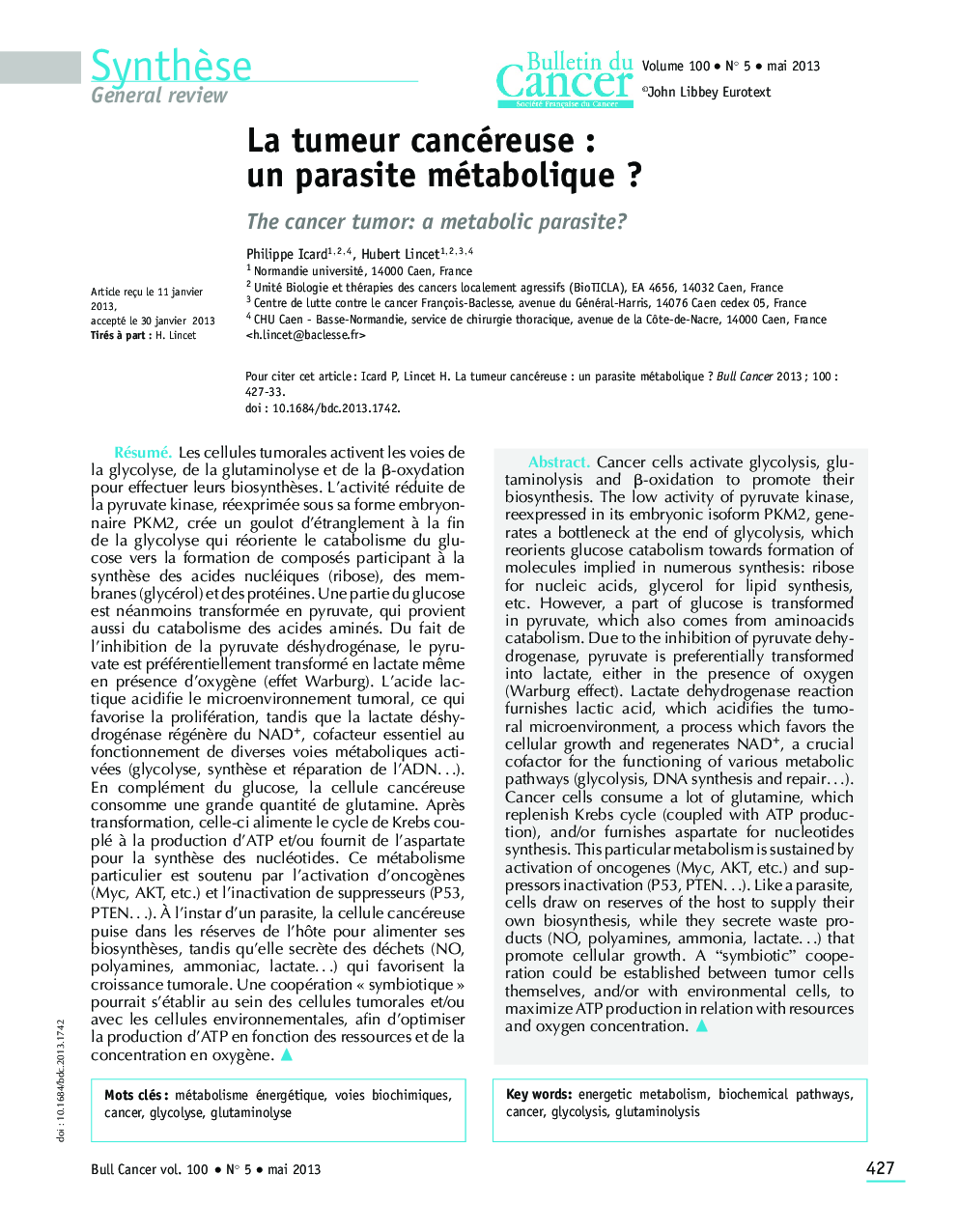| Article ID | Journal | Published Year | Pages | File Type |
|---|---|---|---|---|
| 3978671 | Bulletin du Cancer | 2013 | 7 Pages |
Abstract
Cancer cells activate glycolysis, glutaminolysis and β-oxidation to promote their biosynthesis. The low activity of pyruvate kinase, reexpressed in its embryonic isoform PKM2, generates a bottleneck at the end of glycolysis, which reorients glucose catabolism towards formation of molecules implied in numerous synthesis: ribose for nucleic acids, glycerol for lipid synthesis, etc. However, a part of glucose is transformed in pyruvate, which also comes from aminoacids catabolism. Due to the inhibition of pyruvate dehydrogenase, pyruvate is preferentially transformed into lactate, either in the presence of oxygen (Warburg effect). Lactate dehydrogenase reaction furnishes lactic acid, which acidifies the tumoral microenvironment, a process which favors the cellular growth and regenerates NAD+, a crucial cofactor for the functioning of various metabolic pathways (glycolysis, DNA synthesis and repairâ¦). Cancer cells consume a lot of glutamine, which replenish Krebs cycle (coupled with ATP production), and/or furnishes aspartate for nucleotides synthesis. This particular metabolism is sustained by activation of oncogenes (Myc, AKT, etc.) and suppressors inactivation (P53, PTENâ¦). Like a parasite, cells draw on reserves of the host to supply their own biosynthesis, while they secrete waste products (NO, polyamines, ammonia, lactateâ¦) that promote cellular growth. A “symbiotic” cooperation could be established between tumor cells themselves, and/or with environmental cells, to maximize ATP production in relation with resources and oxygen concentration.
Keywords
Related Topics
Health Sciences
Medicine and Dentistry
Oncology
Authors
Philippe Icard, Hubert Lincet,
